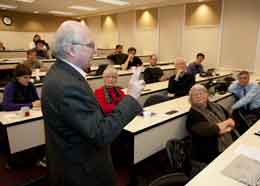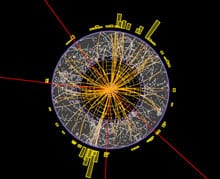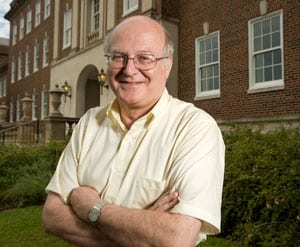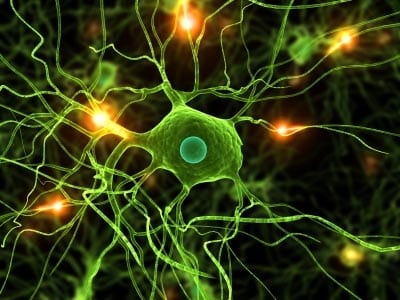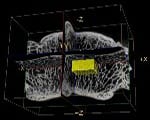Subatomic particle can explain why matter has mass
In a giant game of hide and seek, physicists say there are indications they finally may have found evidence of the long sought after fundamental particle called the Higgs boson.
Researchers at Switzerland-based CERN, the largest high-energy physics experiment in the world, have been seeking the Higgs boson since it was theorized in the 1960s.
The so-called “God” particle is believed to play a fundamental role in solving the important mystery of why matter has mass. (article continued below)
“It doesn’t matter how beautiful your theory is, it doesn’t matter how smart you are. If it doesn’t agree with experiment, it’s wrong.” — physicist Richard Feynman
By Fredrick Olness
Chairman and Professor
SMU Department of Physics
A 50 year search for the origin of particle mass nears an end. Maybe.Mass is a seemingly simple property of everyday objects — atoms, humans, coffee cups. Yet, to understand the origin of mass on a fundamental level has been a challenging problem with a long history. The solution to this problem, suggested nearly 50 years ago, was the Higgs Boson (or just Higgs, for short). However, it has yet to be discovered.
On Tuesday, Dec. 13, 2011, an end to the Higgs search appeared much closer when the CERN Laboratory in Geneva, Switzerland presented the latest results from the Large Hadron Collider (LHC) in a colloquium broadcast around the globe on the World Wide Web.
The announcement was a joint presentation by researchers from ATLAS and CMS, the two largest independent experiments at the LHC, in which they presented evidence for the Higgs based on the results of their 2011 data set.
Both the ATLAS and CMS experiments observed evidence for the Higgs. While the evidence was significant, it was not yet sufficient to claim an unambiguous discovery; however, it is quite compelling that the Higgs mass range obtained by these two independent experiments is consistent.
These results represent a tremendous step forward in explaining why fundamental particles have mass, and whether the Higgs exists.
What is the Higgs boson?
The postulated Higgs boson is responsible for giving mass to the many fundamental particles that make up the universe. This includes the quarks that comprise protons and neutrons, which comprise atoms and molecules, which comprise humans and everything around them. In essence, the Higgs generates the mass of the fundamental particles that make up you and your coffee cup.We know objects have mass — just lift a heavy suitcase or weigh yourself on a scale. But to explain this seemingly simple idea in the context of our current fundamental theories has been a struggle ever since the idea of the Higgs was introduced 50 year ago. The problem is that to give particles mass in a straightforward manner would spoil a particular symmetry of the theory known as the “gauge symmetry.” Who cares? you ask, and why should I be worried about symmetry?
Symmetries have been an important guiding aspect of physics dating back before Einstein, who used symmetry principles, in part, to conclude that “all reference frames are created equal,” which led to his Theory of Relativity — certainly one of the triumphs of the 20th Century.
And that is what is so special about the Higgs; it gives particles a mass without violating the rules of symmetry.
How does the Higgs solve the problem?
According to our current understanding, Higgs bosons permeate all of space. As fundamental particles move through space, Higgs bosons interact with the particles and effectively exert a drag on them; it is this drag effect which we interpret as the mass of the particle.Consider the following experiment. First move your coffee cup through the air, and then repeat this motion underwater; the water provides more resistance on the cup and it “feels more massive” as you drag it through the water as compared to the air. It is the interaction between the water and the coffee cup that provides the resistance to motion of mass. In this analogy, the water is playing the role of the Higgs.
It is the same with a quark, one of the fundamental particles that matter is made from. As a quark moves through space it interacts with the Higgs, and this interaction exerts a drag on the quark so that it “feels heavy.” But this is an illusion; in the strict interpretation of the theory, the quark has “mass” only because of the interaction with the Higgs that simulates the effects of the weight.
DÉJÀ VU: Luminiferous aether
To recap, the current theoretical picture is that Higgs bosons are everywhere. They permeate all space, and they must exist so that fundamental particles (that make up you and your coffee cup) have mass.Have we seen this situation before?
In the late 1800’s, physicists posited the existence of a “luminiferous aether” which permeated all space. Scientists knew that water waves traveled through water, sound waves through air, and so they believed that light waves also needed something to travel through; luminiferous aether was invented to serve this purpose and get the “right” answer. There were many experiments that gave indirect evidence for the aether; however, all attempts to directly measure it were unsuccessful. Eventually it was demonstrated that the luminiferous aether did not exist, and this paved the way for Einstein to show that it was unnecessary and to present an alternative, his theory of relativity.
Thus, the non-existence of luminiferous aether actually led to more fantastic discoveries than if it had been proven.
Direct vs. indirect evidence
So we come to the central question: does the Higgs exist?There is ample indirect evidence that the Higgs exists. We know that fundamental particles have mass, and we believe this mass is due to particle interactions with Higgs bosons. Over the past 50 years physicists have performed a variety of sophisticated experiments, and they all point to the existence of the Higgs.
However, in many ways the Higgs is a contrived solution; inelegant, introduced into the theory because so far there has been no better way to get the right answer — that particles have mass.
Just because it is currently the only solution developed does not mean it is the one that nature chooses.
And that is why we need direct evidence of the Higgs; we need to produce an actual Higgs in the laboratory, study its properties, and verify our theoretical view of the world with cold, hard facts from experimental observation.
The 2011 LHC results
The LHC experiment is producing these facts and evidence.If the Higgs is confirmed to exist, it would validate our theory of how particles acquire mass, and serve as the foundation for myriad experiments in the future. Many speculate this discovery would also warrant a Nobel Prize.
If the Higgs is confirmed to not exist, it would likely send many theorists back to the drawing board in hopes of finding that nature has an even more clever mechanism of how particles acquire mass than we have yet been capable of conceiving. And, just as the non-existence of the aether set the stage for relativity, the non-existence of the Higgs could set the stage for future surprises.
Either way it will be an exciting journey and the results from the LHC bring us one step closer to the answer.
Fredrick Olness is a theoretical physicist at SMU studying Quantum Chromodynamics (the fundamental force that binds nuclei) to help answer the questions: What are the fundamental building blocks of nature, and what holds them together?
Thousands of scientists from around the world seek evidence of the Higgs particle through experiments at CERN’s Large Hadron Collider. The researchers analyze a flood of electronic data streaming from the breakup of speeding protons colliding in the massive particle accelerator. Scientists on Tuesday announced in a seminar held at CERN that they’ve found hints of the Higgs.
“Now we have a strong indication, but not yet a confirmation, of a discovery,” said Southern Methodist University physicist Ryszard Stroynowski, the leader of SMU’s team of scientists working on the experiment.
Higgs: Attempting to discover Standard Model’s missing piece
Theorists have predicted that some subatomic particles gain mass by interacting with other particles called Higgs bosons. The Higgs boson is the only undiscovered part of the Standard Model of physics, which describes the basic building blocks of matter and their interactions.
Higgs bosons, if they exist, are short-lived and can decay in many different ways. Just as a vending machine might return the same amount of change using different combinations of coins, the Higgs can decay into different combinations of particles. Discovery relies on observing statistically significant excesses of the particles into which they decay rather than observing the Higgs itself.
“If indeed we are able to confirm sighting of the Higgs in the months ahead, this clearly focuses our future studies,” said Stroynowski, a professor in the SMU Department of Physics. “Now by the middle of next year we’ll know for sure if this particle exists and we can begin to study its properties. This is a very big step in the understanding of particle physics.”
SMU researchers contributed to the results announced Tuesday by CERN
Besides Stroynowski, the SMU team of researchers includes three other Physics Department faculty: Jingbo Ye, Robert Kehoe and Stephen Sekula, six postdoctoral fellows and five graduate students. Main contributions to the new analysis of the data were made by postdoctoral researcher Julia Hoffman and graduate student Ryan Rios.
Others in the department who have contributed include former postdoctoral fellow David Joffe, now an assistant professor at Kennesaw State University, graduate students Renat Ishmukhametov and Rozmin Daya and theoretical faculty Fredrick Olness and Pavel Nadolsky.
Stroynowski, Hoffman, and Rios are among the more than 70 scientists whose work directly contributed to the conference papers reporting the findings, said Olness, a professor and chairman of the SMU Department of Physics.
While thousands of scientists worldwide participated directly and indirectly in the experiments, SMU is one of only a few U.S. universities whose scientists are named among the 70 researchers directly cited on one of the three conference papers.
“Professor Stroynowski has demonstrated extraordinary scientific leadership in keeping our relatively small Department of Physics at SMU engaged in one of the most significant scientific experiments of our time,” said Jim Quick, SMU Associate Vice President for Research.
SMU’s role in the LHC experiments provides SMU students a chance to participate in pioneering discoveries, said Olness.
“SMU students helped build the ATLAS detector, they were in the control room when the experiment started up, and they contributed to the analysis,” he said. “The results presented today are historic, and they will help shape our view of the matter and forces that comprise our universe; SMU students have played a role in this achievement.”
Higgs discovery would confirm decades-old theory
Discovering the type of Higgs boson predicted in the Standard Model would confirm a theory first put forward in the 1960s.
“This year, the LHC has come roaring into the front of the hunt for the Higgs boson and may be poised to either identify it, or refute its existence, in the coming months,” said Robert Kehoe, associate professor in the SMU Department of Physics. “As I like to tell my students learning modern physics, ‘You still live in a world in which we do not know for sure the mechanism breaking the symmetry between electromagnetic and weak interactions. That world may be soon to change forever. We may soon see a truly new thing.’”
Even if the LHC experiments find a particle where they expect to find the Higgs, it will take more analysis and more data to prove it is a Standard Model Higgs, according to CERN researchers. If scientists found subtle departures from the Standard Model in the particle’s behavior, this would point to the presence of new physics, linked to theories that go beyond the Standard Model. Observing a non-Standard Model Higgs, currently beyond the reach of the LHC experiments with the data they’ve recorded so far, would immediately open the door to new physics, said an official statement from CERN.
Results constrain Higgs’ mass to a range more limited than before
In announcing the findings, CERN noted that two experiments at the LHC have nearly eliminated the space in which the Higgs boson could dwell. The ATLAS and CMS experiments see modest excesses in their data that could soon uncover the famous missing piece of the physics puzzle, the scientists said.
The experiments’ main conclusion is that the Standard Model Higgs boson, if it exists, is most likely to have a mass constrained to the range 116-130 giga-electron-volts (GeV) by the ATLAS experiment, and 115-127 GeV by CMS. Tantalizing hints have been seen by both experiments in this mass region, but these are not yet strong enough to claim a discovery.
Both ATLAS and CMS have analyzed several decay channels, and the experiments see small excesses in the low mass region that has not yet been excluded.
Taken individually, none of these excesses is any more statistically significant than rolling a die and coming up with two sixes in a row. What is interesting is that there are multiple independent measurements pointing to the region of 124 to 126 GeV. It’s far too early to say whether ATLAS and CMS have discovered the Higgs boson, but these updated results are generating a lot of interest in the particle physics community.
The experiments revealed the latest results as part of their regular report to the CERN Council, which provides oversight for the laboratory near Geneva, Switzerland.
Experiments in coming months will refine the analysis
More than 1,600 scientists, students, engineers and technicians from more than 90 U.S. universities and five U.S. national laboratories take part in the ATLAS and CMS experiments. The Department of Energy’s Office of Science and the National Science Foundation provide support for U.S. participation in these experiments.

Over the coming months, both the ATLAS and CMS experiments will focus on refining their analyses in time for the winter particle physics conferences in March. The experiments will resume taking data in spring 2012.
Another possibility, discovering the absence of a Standard Model Higgs, would point to new physics at the LHC’s full design energy, set to be achieved after 2014. Whether ATLAS and CMS show over the coming months that the Standard Model Higgs boson exists or not, the LHC program is closing in on new discoveries. — CERN, Southern Methodist University
SMU is a member of the ATLAS experiment at the LHC. It takes a large team of scientists to search for the Higgs and other new physics; the SMU delegation includes faculty members Ryszard Stroynowski, Jingbo Ye, Robert Kehoe, Stephen Sekula, and a number of research professors, postdoctoral fellows and graduate students.
In addition, recent SMU ATLAS contributors include postdoctoral fellows Julia Hoffman, David Joffe (now at Kennesaw State), Ana Firan, Haleh Hadavand, Sami Kama, Aidan Randle-Conde and Peter Renkel, and graduate students Ryan Rios, Rozmin Daya, Renat Ishmukhametov Tingting Cao and Kamile Dindar-Yagci. Theoretical support was provided by faculty member Pavel Nadolsky, electronics development by research professors Andy Liu and Annie Xiang, and computer support by Justin Ross.


